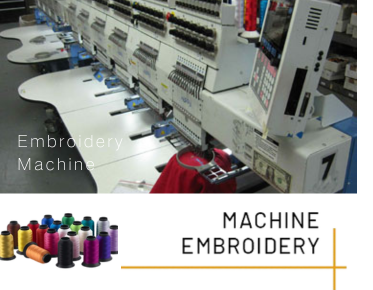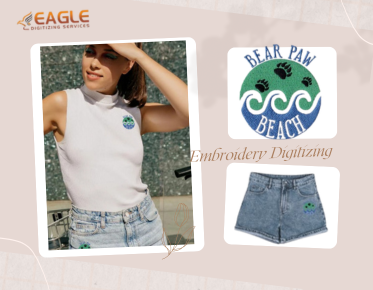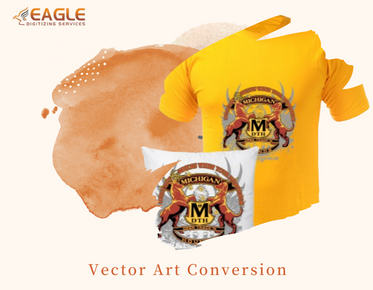Choosing the right stitch types: Matching needle density to fabric material
Embroidery is an art that combines creativity with technical precision. One of the most crucial aspects of achieving high-quality embroidery is selecting the right stitch types and matching needle density to the fabric material. This decision impacts not only the aesthetic appeal of the embroidery but also its durability and functionality. Understanding the interplay between stitch types, needle density, and fabric material is essential for anyone involved in embroidery, whether you're a hobbyist or a professional in the embroidery digitizing industry.
Understanding Stitch Types
Stitch types in embroidery can vary widely, from simple running stitches to complex satin and fill stitches. Each type serves a different purpose and is suited to different kinds of designs and fabrics. For instance, running stitches are ideal for outlining and fine details, while satin stitches are perfect for creating smooth, shiny surfaces. Fill stitches, on the other hand, are used to cover larger areas with a dense, textured appearance.
Needle Density and Its Importance
Needle density refers to the number of stitches per inch in a given area of embroidery. It is a critical factor that influences the final look and feel of the embroidery. High needle density can create a more solid and durable design, but it can also lead to puckering if the fabric cannot support the weight of the stitches. Conversely, low needle density might not provide enough coverage, especially on darker fabrics or intricate designs.
Matching Needle Density to Fabric
Different fabrics require different needle densities to achieve the best results. For example, lightweight fabrics like silk or chiffon need a lower needle density to prevent damage and puckering. In contrast, heavier fabrics like denim or canvas can support a higher needle density, which allows for more detailed and durable designs. It's essential to adjust the needle density based on the fabric's weight and weave to ensure the embroidery looks professional and lasts longer.
Choosing the Right Stitch Type for Your Fabric
The choice of stitch type should complement the fabric's characteristics. For instance, satin stitches work well on smooth, tightly woven fabrics, providing a sleek and polished finish. On textured or loosely woven fabrics, fill stitches might be more appropriate as they offer better coverage and stability. Understanding these nuances can significantly enhance the quality of your embroidery projects.
Role of Embroidery Digitizing
Embroidery digitizing plays a pivotal role in determining the stitch types and needle density for a given design. This process involves converting artwork into a digital format that embroidery machines can read. Companies like Eagle Digitizing specialize in this service, offering expertise in creating designs that minimize thread breakage and ensure smooth sew-outs. Their services are particularly beneficial for businesses looking to embroider company logos, symbols, and artwork on various fabrics.
Eagle Digitizing provides a range of services, including 3D PUFF digitizing and left chest digitizing, which are tailored to meet the specific needs of different clients. Their skilled digitizers ensure that each design is optimized for the fabric it will be embroidered on, taking into account factors like stitch type and needle density.
Practical Tips for Embroidery Success
To achieve the best results in embroidery, consider the following tips:
- Always test your design on a fabric swatch before committing to the final piece. This allows you to adjust the needle density and stitch type as needed.
- Use high-quality threads and needles to prevent breakage and ensure a smooth finish.
- Consult with professional digitizing services to optimize your designs for different fabrics and applications.
Future Trends in Embroidery
As technology advances, the field of embroidery is also evolving. Innovations in embroidery machines and digitizing software are making it easier to create complex designs with precision. The demand for personalized and custom embroidery is growing, leading to an increased need for skilled digitizers and high-quality digitizing services. Companies like Eagle Digitizing are at the forefront of this trend, offering cutting-edge solutions that cater to a wide range of embroidery needs.
As you explore the world of embroidery, remember that the right combination of stitch types, needle density, and fabric material can transform your designs from ordinary to extraordinary. Whether you're working on a personal project or a commercial venture, understanding these elements will help you achieve the best possible results.



